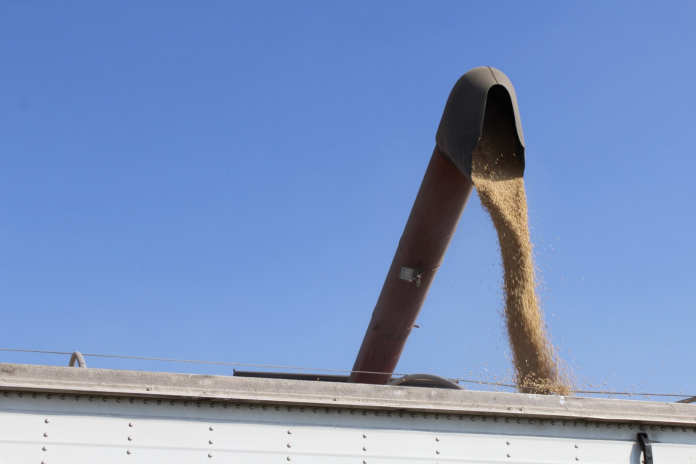While January left the old year behind, it didn’t leave behind any of the baggage 2023 saddled American farmers and ranchers with.
The chief worry carried forward was last year’s slumping grain markets, especially soybeans. August 2024 soybean futures skidded from near $14 per bushel in mid-November to under $12.50 per bu. by late January with little sign of slowing.
Similarly, May 2024 corn futures hit a harvest high of $5.16 per bu. in mid-October and have inched steadily downward ever since. By late January, however, prices appeared to have stabilized in the $4.50 to $4.60 bu. range while they, like other grain markets, wait for news that might shake off their winter funk.
The little news that did hit the grain markets after the year-ending holidays was more encouraging to market bears than market bulls.
For example, our friends at farmdocDAILY released their revised 2024 crop cost estimates from last August on Jan. 9, and nothing in the cold calculations and hard estimates was heartwarming or checkbook-filling. Indeed, today’s weaker prices are translating directly into “lower return and profitability projections.”
That’s a pleasant phrase for bad news because, according to University of Illinois ag economists Nick Paulson and Gary Schnitkey, “Current farmer return expectations are negative for both corn and soybeans across all regions”— four regions for the 385-mile long state — “for 2024… cash rented land at average rent levels…”
And the “negative” returns are big. For corn, projected losses range from a knee-bending $160 per acre in southern Illinois to an only slightly better $135 per acre in central Illinois.
The projected, per-acre losses are smaller for 2024 Illinois soybean growers, but still wallet-crunching; they range from $107 in southern Illinois to a slimmer but still stinging $20 in central Illinois.
Extension experts say those compounding losses suggest “cost adjustments” by growers “will be needed in 2024 and beyond” to either reduce the anticipated losses or scratch out a profit. Both seem like tall orders now.
One “adjustment” that would benefit all farmers is for Congress to raise crop insurance’s reference prices, the floor prices guaranteed by the U.S. Department of Agriculture’s federal crop insurance program. In flagging markets like 2024, higher reference prices would make crop insurance payments all but certain and, as markets stall, large.
American Farm Bureau Federation President Zippy Duvall and Secretary of Agriculture Tom Vilsack both spoke to that possibility at the recent AFBF convention in Salt Lake City. Duvall said U.S. agriculture would be “devastated” if Congress failed to raise reference prices in its still-stalled 2023/24 Farm Bill effort.
In his convention remarks, Vilsack did not argue against higher crop insurance benchmarks. He did warn members of the politically potent Farm Bureau, however, that retargeting USDA food assistance funds to underwrite more costly crop insurance programs would not fly in either the Senate, House or White House.
Vilsack added if farmers want higher reference prices they need to push Congress “to get creative” in finding the money to finance them. He pointed to the Commodity Credit Corporation as one possible source.
A one-time reliable boost for prices, ag export demand, is experiencing a 2023 hangover, also. For example, according to USDA data, China’s total soybean imports last year were an incredible 100 million metric tons. Brazil, however, supplied 70% of the total and the U.S. only 24%, 13% less than the year before.
Worse, while Brazil’s 2024 soy crop got off to a rough start, neighboring Argentina’s crop is looking better than first thought, putting more U.S. soy markets in South America’s gunsights for later this year.
As such, February — even without this year’s Leap Day — is going to be a long month.














